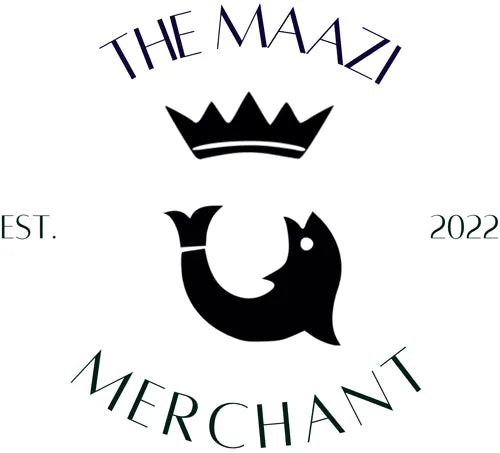The story of Jahangir and Shah Abbas (the Emperor of Persia) is very interesting. The Safavids were traditional allies of the Mughals and it was Shah Abbas’s grandfather, Shah Tahmasp, who helped Humayun seize back the throne of Hindustan. All he asked for in return was Kandahar. The Safavad throne of Persia eventually fell into the chaos of succession and Akbar used this as an opportunity to take back Kandahar from the Persians. Abbas continued to maintain cordial relations with the Mughals even though he pursued the return of Kandahar. In 1620, there was a diplomatic incident in the Mughal court where the Persian diplomat refused to bow down to the Jehangir and that led to wat between the two kingdoms. By the year 1622, there was an additional distraction for the Mughals in the form of a Civil strife because of rebel kingdoms and resistance from the deccan. Abbas realised that it was an opportune moment, launched a lightening raid and took back Kandahar. After the conquest, Shah Abbas was very cordial and conciliatory to Jehangir and claimed that he had only taken back what was righty his and declared that he had no further territorial ambitions. While Jehangir was not pleased at all, he was never able to recapture the province. This painting was made in the run up to Jehangir’s loss of Kandahar. It represents Jahangir's imaginary entertainment of the Persian ruler Shah Abbas. The opulence displayed by Jahangir in this scene symbolizes the Emperor's desire to overwhelm his opponent with his wealth and power. Unfortunately, as we read earlier, Jahangir's ambitions were not realized as Shah Abbas captured Kandahar from the Mughals in 1622, a few years after the execution of this painting. Unfortunately, in 1739 Nadir Shah of Iran attacked the Mughal capital at Delhi, seizing many of the best Mughal paintings and manuscript illustrations. These were mounted into albums prepared and decorated by the leading Persian artists of the day and eventually formed the compilation known today as the St. Petersburg album. At the risk of digressing but getting into the sphere of the provenance of the painting, Persia had a constitutional revolution and deposition of sorts in in the early 1900s. This was also coupled with a discovery of petroleum by the British in Khuzestan which spawned an intense British interest in Persia by the Empire and its companies. Russia and UK both contested for control of the regions in what became known as the Great Game and Persia was eventually divided into spheres of Russian or British influence regardless of her national sovereignty. It was during this period in 1910 that the Mughal Muraqqa album found its way to St Petersburg and eventually parts of it landed in British and American museums. The provenance of the west describes the album as the St Peteresburg Album. This painting is a part of that album, which contains some of the best works from Hindustan. The painting made in opaque water color, gold and ink on paper was made by Bishandas, a 17th century, Mughal master, embedded in the court of Jehangir. The Badshah praised Bishandas as unrivalled in the art of portraiture. Although little is known about him, his name suggests that he was a hindu like several other artists in the imperial workshop. In 1613, he was sent on a diplomatic mission to Persia to make portraits of Shah Abbas I and other leading Persian figures. Here he was so successful that he remained there until 1620 and on his return Jehangir gave him an elephant (big deal in those days). Thankfully, a painting of Bishandas exists and was made by another Mughal great – Daulat. Bishandas is also the creator of one of my personal favourites - a painting of Nur Jahan holding a portrait of Jehangir. Hope to share more about Bishandas as and when new information emerges. Cheers!
JTNDdWwlMjBjbGFzcyUzRCUyMm5hc2EtdGFicyUyMG5hc2EtY2xhc3NpYy1zdHlsZSUyMG5hc2EtY2xhc3NpYy0yZCUyMiUzRSUwQSUzQ2xpJTIwY2xhc3MlM0QlMjJuYXNhLXNpbmdsZS1wcm9kdWN0LXRhYiUyMGRlc2NyaXB0aW9uX3RhYiUyMG5hc2EtdGFiJTIwYWN0aXZlJTIwZmlyc3QlMjBsYXN0JTIyJTNFJTBBJTNDYSUyMGhyZWYlM0QlMjJqYXZhc2NyaXB0JTNBdm9pZCUyODAlMjklM0IlMjIlMjBkYXRhLWlkJTNEJTIyJTIzbmFzYS10YWItZGVzY3JpcHRpb24lMjIlMjByZWwlM0QlMjJub2ZvbGxvdyUyMiUzRSUwQU1hdGVyaWFscyUyMFVzZWQlM0MlMkZhJTNFJTNDJTJGbGklM0UlM0MlMkZ1bCUzRQ==
Museum Grade Canvas
Museum grade 370 GSM Canvas by Hahnemuhle
|
Matt-coated inkjet canvas | poly - cotton fabric | 370 gsm | Natural white | Zero artificial optical brighteners | Acid and lignin free | Museum quality for highest age resistance

Archival Paper
Premium Age Resistant Art Paper – 200 GSM
|
Matt finish premium | Rough Textured Surface | 200 GSM | 100% Cotton Fibers | Acid Free | High Age Resistance
Premium Curated Frames
Premium Frames curated by The Maazi Merchant
|
Curated Frames | Choose from a broad selection of Natural Wood and Fiber Frames | Each item is framed with a 1.5 Inch Mount

Stretched Canvas
Hand Stretched Canvas Wrap on Wood Frame
|
Hand Stretched | Gallery Wrapped Canvas | Natural wood bar frames | Linear bracing | Back Stapled with Folded uncut tailored corners | Kiln-dried Stretcher Bars | Manufactured By Professionals For Professionals

Unframed Prints
Unframed Prints shipped in Spiral wound chipboard tubes
|
Unframed Prints are shipped in round mailing art tubes are made of spiral wound chipboard | Ideal for shipping and storing artwork, papers or documents | Tube sizes vary on the item purchased | Offers the best possible protection
Care Instructions: Protect from direct sunlight, extreme temperatures, dust, and moisture to ensure longevity.
OUR USP: The final print mirrors the shown image perfectly, thanks to our superior printing technique. Our canvas prints include a protective spray and varnish, guarding against dust, moisture, and fingerprints, ensuring they last a lifetime.

























